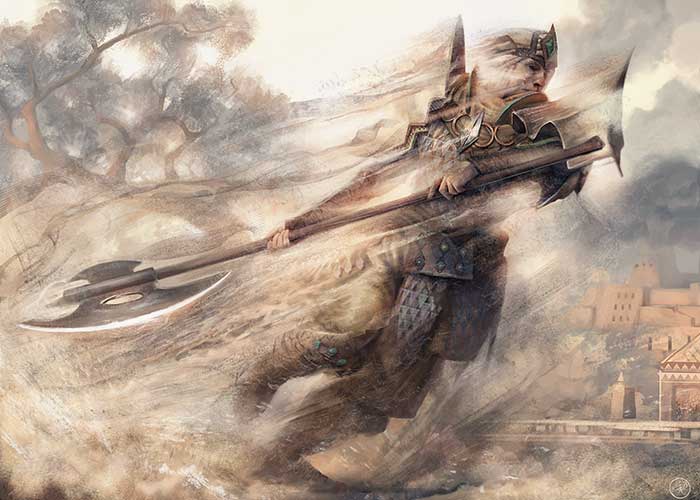If, once again, we follow D&D tradition and transform this unique magical creature into a standard type, we get the Skull Chieftains: spirits stored in the preserved skulls of tribal leaders and champions of ages past, who are called forth through sacrificial rituals in order to aid their people once more in times of dire need. Here's how it works: if a great leader or warrior dies in his sleep, then there is a chance that his spirit might not realise that he's actually dead yet. If his tribesmen then quickly cut off his head, roll it in a blanket, and put it back in the middle of his yurt, singing soothing songs to it continuously as they do so, the spirit may (50% chance) stay asleep; and as long as it sees only its familiar yurt around it, and no-one comes in to disturb its rest, it can potentially slumber inside its skull indefinitely.
 |
| Shh! He's sleeping! Don't wake him up! |
The tribe will carry the yurt with them from place to place as they travel, setting it up each time they pitch camp, but always taking the greatest care not to disturb the spirit-skull resting inside. When some kind of emergency arises, they will sacrifice a horse and an ox outside the yurt and call for the warrior within to come forth and lead them; the life-force from the sacrifices will empower the spirit, and it will put forth a mortal body once more and emerge to lead or fight alongside the tribe until the emergency is dealt with. The resulting spirit-warrior doesn't know that it is dead: it is willfully blind to most of the evidence of time and change around it, but if any especially striking instance is brought to its attention (e.g. hearing a song about its own death, being greeted as 'great-grandfather' by one of its living descendants, etc), it has a 50% chance of 'waking up' and returning to the afterlife at once, leaving nothing behind it but a mouldering old skull. Intelligent enemies will want to take advantage of this.
 |
| Risen, they look kinda like this. Art by Ryan Lee. |
When peace returns, there is a 20% chance that the spirit will clear its head and depart for the afterlife; otherwise, it will be overcome with weariness and return to its yurt to sleep once more. If the skull is disturbed while sleeping in its yurt - by someone coming in and making a racket, for example - then the spirit will have a 75% chance of waking up and departing; if the skull itself is disturbed or damaged, then the spirit will wake up and depart at once. For this reason, when one tribe makes a surprise attack on the camp of its rivals, the yurts of the sleeping Skull Chieftains are usually their first target.
Skull Chieftain (Great Warrior): AC 16 (ghostly armour), 6 HD, +7 to hit, sword (1d8+1 damage) or bow (1d8+1 damage), FORT 8, REF 8, WILL 8, morale 9.
Skull Chieftain (Great Leader): AC 15 (ghostly armour), 4 HD, +4 to hit, sword (1d8 damage) or bow (1d8 damage), FORT 10, REF 10, WILL 10, morale 10. All tribesmen whom the great leader personally leads into battle gain a +1 bonus to hit, damage, and morale.
No comments:
Post a Comment